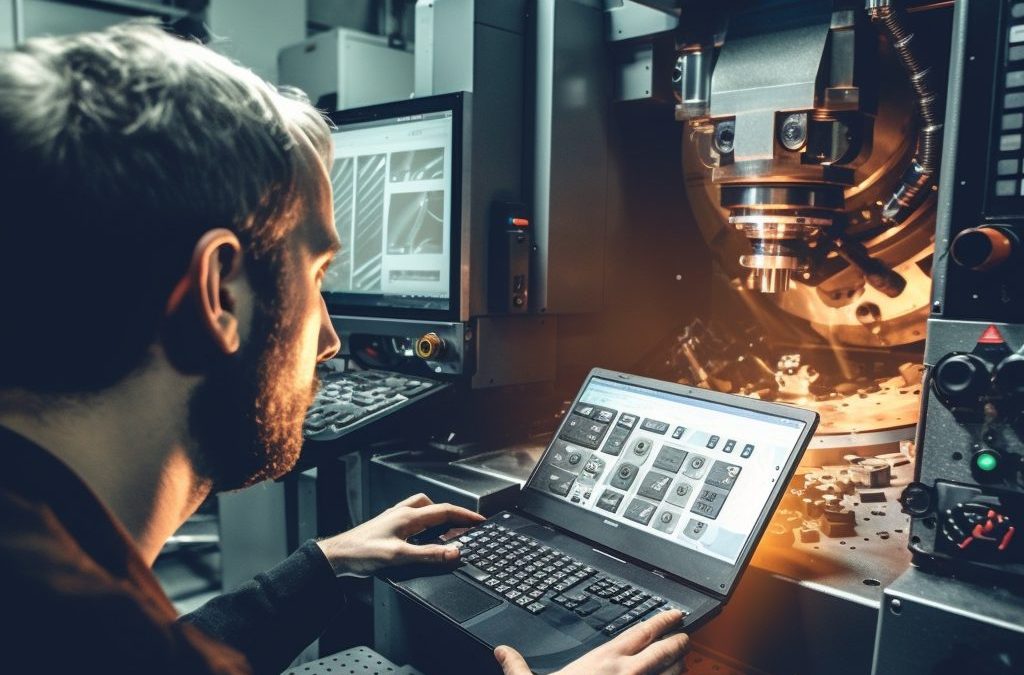In the age of relentless technological advancement, the modern industries landscape is undergoing a transformation like never before. One critical technology playing a significant role in this evolution is Advanced CNC Programming. From automotive to aerospace, medical to manufacturing, its imprint is substantial and growing.
1. CNC Programming: A Quick Refresher
Before we dive deeper into advanced CNC Programming’s effects on modern industries, let’s quickly recap what CNC Programming entails. CNC, short for Computer Numerical Control, is a process used in manufacturing where pre-programmed computer software dictates the movement of machinery. This process is fundamental in creating intricate parts and components with exceptional precision and speed, an ability that’s critical to many industries today.
2. The Evolution: From CNC to Advanced CNC Programming
CNC programming’s rise wasn’t an overnight success. It gradually evolved, integrating more advanced features to boost its capacity and precision. Advanced CNC Programming incorporates high-level codes and a multitude of algorithms that enhance the functionality, speed, and efficiency of manufacturing machinery. This transformation is primarily responsible for the highly sophisticated production processes we see in modern industries today.
3. Impact on Modern Industries: A Deep Dive
Now, let’s explore the primary ways advanced CNC programming is changing modern industries.
3.1. Enhanced Precision and Quality
Advanced CNC Programming offers an unprecedented level of precision. Unlike traditional manual input methods, CNC machines, under advanced programming, reduce errors significantly, providing exceptional quality. This improvement is particularly beneficial in industries where minute details make all the difference, like aerospace and medical equipment manufacturing.
3.2. Increased Productivity and Efficiency
Advanced CNC Programming helps industries achieve higher productivity levels by automating complex tasks that would otherwise require manual labor and significant time. It allows machines to run continuously with minimal supervision, speeding up production processes and improving overall efficiency.
3.3. Flexibility in Production
With Advanced CNC Programming, machines can be programmed to produce different parts without requiring substantial setup changes. This flexibility allows industries to adapt to changing market demands quickly, offering a competitive advantage in today’s fast-paced world.
3.4. Cost Efficiency
By reducing errors, speeding up production, and enabling flexibility, Advanced CNC Programming ultimately contributes to cost efficiency. With less waste, faster output, and fewer labor costs, businesses can improve their bottom line and reinvest their savings into other areas of growth.
4. Advanced CNC Programming: Real-World Applications
To understand the real-world impact of Advanced CNC Programming, let’s take a quick tour of how it’s driving innovation in various modern industries.
4.1. Automotive Industry
In the automotive industry, Advanced CNC Programming is integral to producing components with high precision and consistency. It allows for the efficient manufacture of engine parts, intricate car designs, and even fully functional prototypes.
4.2. Aerospace Industry
The aerospace industry demands extraordinary precision and consistency, given the extreme conditions aircraft components are exposed to. Advanced CNC Programming is the backbone of producing such high-caliber parts, contributing to the advancement and safety of air travel.
4.3. Medical Equipment Manufacturing
The production of medical equipment—from surgical tools to prosthetic devices—requires pinpoint accuracy. The application of Advanced CNC Programming in this sector ensures this level of precision, fostering the development of better, safer medical tools.
5. The Future of Advanced CNC Programming in Modern Industries
Advanced CNC Programming is not a trend that will fade away—it’s here to stay and will continue to evolve. Its integration into modern industries is expected to expand, with newer, more efficient algorithms and codes being developed. This continuous evolution will likely unlock even more exciting potential.
5.1. Greater Automation
Advanced CNC Programming is set to push the boundaries of automation further. With more complex programming, machines will be able to take on tasks requiring more advanced logic and decision-making abilities. This advancement will lead to higher productivity levels, increased efficiency, and more innovative product designs.
5.2. IoT and Industry 4.0 Integration
As the Internet of Things (IoT) and Industry 4.0 trends gather momentum, Advanced CNC Programming will play a pivotal role in integrating these technologies into production processes. It can help machines communicate and collaborate, creating smarter, interconnected manufacturing environments.
5.3. Advancements in Material Handling
Material handling in manufacturing industries is another area ripe for transformation. With the advent of advanced CNC Programming, we could see machines capable of handling a variety of materials, adjusting to different weights and densities, and even conducting quality control checks independently.
5.4. Enhanced Customization
In a world where customization is king, Advanced CNC Programming could facilitate greater personalization. By enabling machines to adapt quickly to new designs and requirements, industries can offer a wider range of custom options without compromising on efficiency or cost.
6. Navigating the Learning Curve
Implementing Advanced CNC Programming comes with its challenges, one of which is the steep learning curve. This complexity necessitates a workforce with a strong grasp of advanced programming skills. As such, the demand for highly skilled CNC programmers is expected to rise. To stay competitive, industries must invest in training and upskilling their workforce, nurturing a new generation of CNC programmers capable of harnessing the full potential of this transformative technology.
7. Conclusion: Embracing the Future
The impact of Advanced CNC Programming on modern industries cannot be overstated. From enhanced precision to increased productivity, flexibility, and cost efficiency, this technology is fundamentally altering the industrial landscape. With its continued evolution, we can expect to witness even greater advancements that push the boundaries of what’s possible in manufacturing and beyond.
While there are challenges to overcome, the potential rewards for industries ready to embrace Advanced CNC Programming are significant. As this technology continues to evolve and integrate with other advancements like IoT and Industry 4.0, it’s clear that Advanced CNC Programming will remain a key player in shaping the future of modern industries.
By understanding and embracing this transformation, businesses can equip themselves to stay ahead of the curve, setting the stage for continuous innovation, growth, and success in the new industrial era defined by the transformational power of Advanced CNC Programming.

